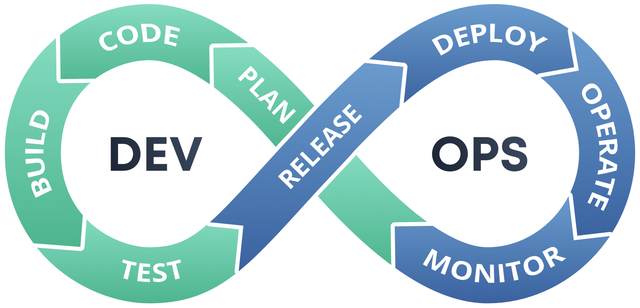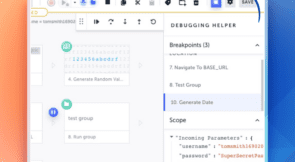The last few years have seen a rise in the adoption of DevOps by companies to improve the speed and quality of software deliveries. This comes as no surprise since DevOps is highly effective in that regard. DevOps seeks to improve the coordination between the development and operations teams through better planning, processes, communication, and tools. Automated testing helps standardize and accelerate DevOps processes. This post covers the basics of DevOps, DevOps testing strategies, and best practices.
What Is DevOps?
The term DevOps is a combination of two words: development and operations. DevOps is a set of practices aimed at streamlining these areas to ensure that they work together. The idea behind this is to speed up the delivery of working software and remove any unexpected bottlenecks.
Some of the key concepts of DevOps, like continuous integration and continuous delivery, have roots in the early agile approach. However, DevOps emphasizes fast delivery and deployment and, as such, can be used with or without agile.
Understanding the DevOps Lifecycle
DevOps is an iterative process that takes place throughout the development of a product. There are several phases involved in the typical DevOps process. Below, we list the various phases and describe the intersection between dev and ops and how they fit together in the DevOps model. Let’s take a brief look at each phase. This is often represented by the “DevOps infinity loop.”

- Plan: This phase is for the planning of the software. There’s an intersection between dev and ops because data from the monitoring of the software in operations can help influence the planning.
- Code: This is where the software modules or features are coded. Different team members can work independently through version control systems like Git, committing their changes and pull requests to add to the main branch.
- Build: Software is compiled into machine-readable instructions. Continuous integration servers help ensure that the software is updated with the committed code.
- Test: This is the testing phase, where dev and ops teams perform manual and automated tests.
- Release: During this phase, the software is released into a pre-production environment.
- Deploy: This includes promotion into the production environment along with the configuration of the software.
- Operate: The operations team ensures that the software is performing properly from functional and non-functional aspects. This phase typically includes monitoring performance, adjusting for load, and making additional configuration changes.
- Monitor: Ongoing monitoring helps inform the development team of future changes including bug fixes. It also forms the baseline for the production configurations that the development team will adopt for additional releases.
Expand Your Test Coverage
Benefits of DevOps
Improved Collaboration
DevOps concepts are rooted in bringing the dev and ops teams together. Prior to this, these teams worked in isolation, with the dev team handing off code to the ops team to test and deploy to production. However, DevOps encourages these two teams to work closely together, to consider production and security configurations earlier in the software development lifecycle (SDLC). It also helps improve accountability as the entire team is responsible for the success of the project. “It worked in the development environment” is no longer an acceptable answer when the entire team is measured on the success of the application.
Faster Time to Market
The main reason behind the creation of DevOps was to help companies deploy products faster. With dev and ops teams working together, they can streamline processes, and improve coordination to remove knowledge gaps. Better coordination between the teams and automation between phases helps reduce manual gaps and improve speed.
Reliability
The DevOps model also helps increase reliability. When the teams work together, they bring different knowledge and can help reduce surprises such as a new container configuration or configuration differences to support higher production volume. The development team can better communicate areas of risk that need to be tested more thoroughly due to new changes to the codebase. As a result, the end product remains stable and works as expected.
A Balance Between Speed and Security
Oftentimes, teams need to make tradeoffs between speed and security. Security testing can be inserted throughout the DevOps process from static code scans for vulnerabilities to updates to penetration testing in production. Similar to other configurations mentioned above, changes by operations to improve security or compliance can be built into the next release. Security configurations can be treated like code and tested as part of each phase.
Developing a DevOps Workflow for Your Team
Product teams vary based on needs and goals, so there is not a one size fits all solution. As such, it’s important to develop a DevOps workflow that works for your team. This would vary depending on the product and team, but there are generally two main scenarios. The first scenario involves developing software in a greenfield (i.e., a clean slate). It gives you room to tweak and improve processes as you learn. This makes it easier to automate your software delivery pipeline upfront. As the application grows and the team increases in size, it’s easier to scale your test operations (TestOps).
On the other hand, you might have an existing team and codebase and want to adopt DevOps into your existing workflow. This would require a little more work to restructure your workflow than a greenfield would entail. The easiest way to get started is by visualizing tasks with a Kanban board.
Visualizing tasks with a Kanban board allows you to identify issues that are causing delays. You can then address these issues to speed up the workflow. Putting tasks on a board like this brings both teams together, which increases interaction between them. These teams can work hand-in-hand to brainstorm and develop effective test strategies that cover all bases. Overall, this improves the collaboration between dev and ops and increases development velocity.
Best Practices for Testing in DevOps
Automate Testing Where Possible
Manual tests, no matter how careful, leave room for errors. Manual tests are also extremely time-consuming, especially for mature products that require extensive regression analysis. The result is often either delay in the release or bugs escaping to production.
Automated tests validate software faster and more consistently. Unlike humans, automated tests don’t have any bias, nor do they get tired and make mistakes. Once written, they can be reused as many times as needed. They are also less expensive to maintain.
Finally, automated tests can be integrated into your continuous integration flow. Every new push will run the tests to ensure that the new push doesn’t break anything.
Write End-to-End Tests
Often during a conversation on automated testing, the conversations revolve around unit tests. But besides unit tests, it’s also important to write end-to-end tests that test real user scenarios and span functional areas that unit or component tests don’t cover. These tests ensure that a flow or feature works and continues to work as the team adds new code and when done right, provide the team confidence that regressions will be caught.
Adopt Pair Testing for Manual Testing
There may be test cases too complex to automate or that require manual testing for other reasons. In these cases, a suitable approach is to adopt pair testing. Just like pair programming, pair testing involves two team members working together to test the software. It could be a mix of team members: tester and developer, two testers, or a product manager and tester.
The main point is that both parties work on a single workstation to test the software. One party does the testing while the other probes and analyzes the outcomes. This approach also helps to improve the interaction between team members and teams.
Getting Started With Testing in DevOps
As DevOps and other similar methodologies gain traction, teams need to develop an automated testing strategy to minimize manual friction and improve release quality. We offered some best practices above which are supported by Testim Automate. It’s free and scales as your product grows over time. It works well with version control services like GitHub and runs your tests for every push. Sign up for free.




